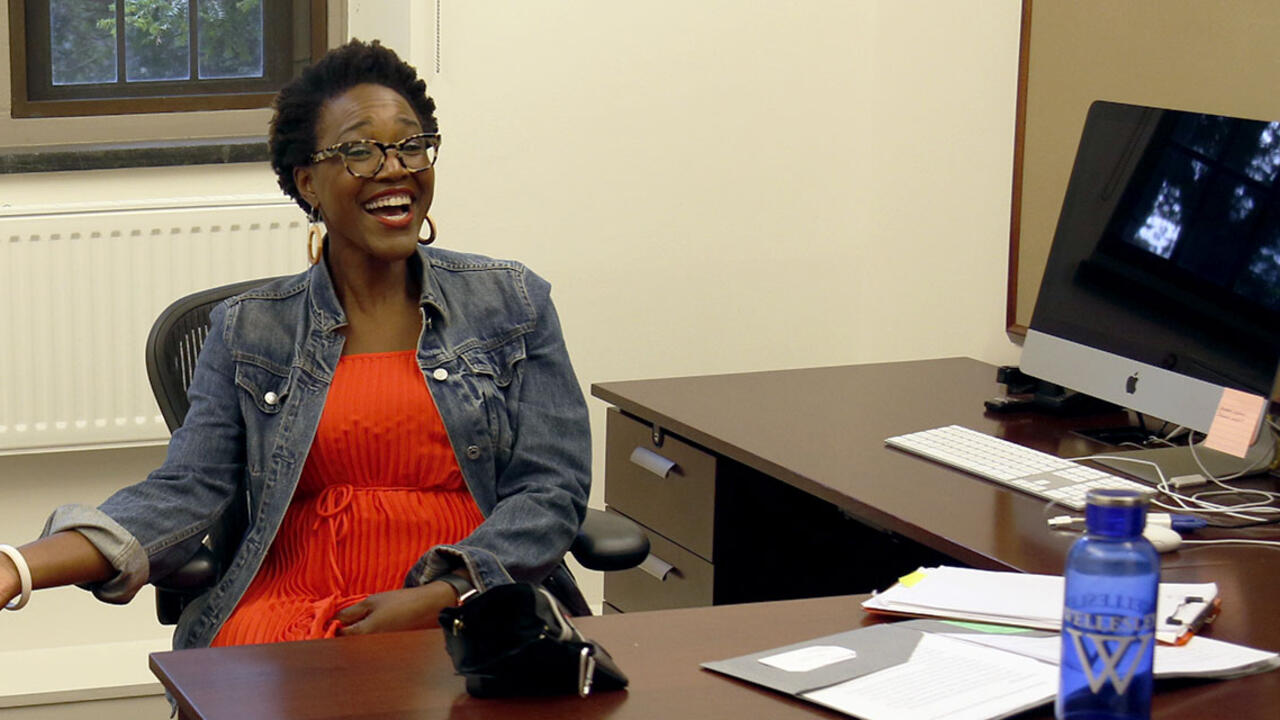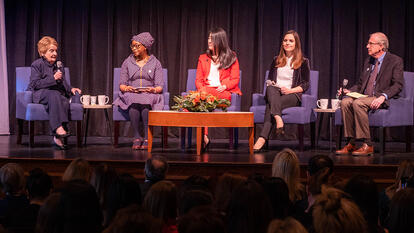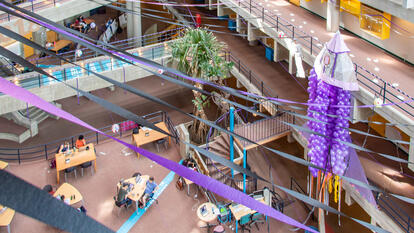What I Did This Summer: Nikki A. Greene, Assistant Professor of Art

After the last spring semester exam has been graded and most students have left campus for summer internships, jobs, and travel opportunities, what do Wellesley professors do? Today, we continue our five-part series that looks at faculty members’ summer breaks as they explore, create, collaborate, conduct research, and travel.
Nikki A. Greene, assistant professor of art and a summer fellow at Wellesley’s Newhouse Center for the Humanities, never stops writing. Here, she discusses her summer experiences as a writer in residence in Wyoming, where she honed her skills as a storyteller, and at the Newhouse Center. She and her family also found time to travel and to adopt a new member—a friendly beagle mix named Leo.
Q: What were the highlights of your summer?
Nikki Greene: My summer began with an artist residency in nonfiction writing at the Ucross Foundation in northeastern Wyoming—one of the most beautiful parts of the country. I spent the majority of my time finalizing a chapter of my book manuscript, Grime, Glitter, and Glass: The Body and the Sonic in Contemporary Black Art. Surrounded by deer, cattle, horses, and birds, my two weeks there were both restorative and productive. It was a privilege to share space with so many amazing authors, artists, and musicians. It was heaven!
Upon my return, I settled in as a Newhouse Center for the Humanities summer fellow, where I was putting the last touches on my book manuscript before classes started. I also finished an essay for the Isabella Stewart Gardner Museum titled “Thomas McKellar sous rature: John Singer Sargent’s Erasure of a Black Model.” My thesis outlines new visual and theoretical lines of inquiry for evaluating the images of Thomas McKellar by John Singer Sargent in drawings, a portrait painting, and within the mural paintings of the rotunda at the Museum of Fine Arts, Boston. American Studies professor Paul Fisher has also contributed a fantastic biographical essay on McKellar for the exhibition catalog, which will be available in early 2020.
Of course, I took breaks. I had a wonderful time on vacation with my husband and two kids in Montreal with stops in New Hampshire and Vermont and in Martha’s Vineyard, our happy place.
Q: What would a typical day look like for you during the summer?
Greene: My family just adopted a five-year-old beagle mix, Leo, from Forever Home Rescue New England in July. My summer routine included waking up early to walk the dog before getting my two kids off to summer camp. I would go to the Newhouse or stay in my home office and write (with Leo by my side). Since I have had tight deadlines, once the kids were settled, I returned to writing and editing at night and on the weekends.
Q: What is one thing you want students to know about your work?
Greene: I am deeply invested in expanding the field of art history to include the voices of artists and scholars of the African diaspora—and I love music! I pursue a crucial question in my book: By juxtaposing visual art and music, can a model open up within the historiography of art to include not only jazz and, more recently, hip hop, but also funk and rumba in order to interpret art by black artists from new perspectives? In my seminar, The Body: Race and Gender in Modern and Contemporary Art, I “require” that students teach me something new by finding a musical example, usually a music video, that is pertinent to the course. Beyoncé and Janelle Monáe have made an appearance once or twice before.
Q: What’s the most interesting aspect of your summer that you plan to take with you into this academic year?
Greene: My time in Wyoming taught me to cherish stillness and observation. The simple pleasure of reading a short story while sipping my coffee on my porch or listening to an audiobook while walking my dog on campus does wonders for my writing process. It has deepened my appreciation for the craft of storytelling—even within the history of art. I hang on to Toni Morrison’s words: “This is precisely the time when artists go to work. There is no time for despair, no place for self-pity, no need for silence, no room for fear. We speak, we write, we do language. That is how civilizations heal.” I am ready to go to work.



